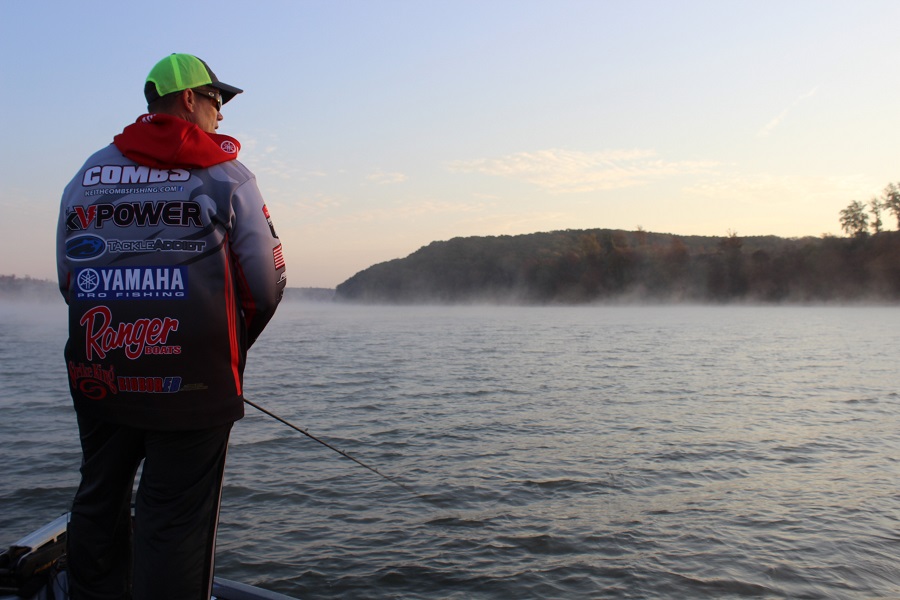 For years monofilament line was the only game in town when it came to fishing lines; but over the past decade or so, fluorocarbon and braided lines have taken over bass fishing.
For years monofilament line was the only game in town when it came to fishing lines; but over the past decade or so, fluorocarbon and braided lines have taken over bass fishing.
It is with good reason that this change took place. They are great choices for a fishing line. The invisibility and sinking properties of fluorocarbon and the strength and thin diameter of braid make them both excellent bass fishing lines.
That doesn’t mean there isn’t a place for monofilament and top pro bass anglers still find many uses for mono, besides just topwater fishing.
Mono as a Leader
Monofilament is very different than fluorocarbon in that it floats. It is one of the reasons many anglers use it for topwater fishing, but it also works well as a leader connected to braided line for both topwater baits and Carolina-rigs. Like the braid to fluorocarbon leader that has become so popular, using a braid to mono makes sense for topwaters.
Monofilament for Topwater Lures
A short 10- to 20-inch leader of mono is all you need to keep the bait floating and you still get the strength and castability of braid.
Two Bassmaster winners, Keith Combs and Jordan Lee rely on braided line with a short leader of Seaguar Rippin’ Mono in either 15- or 20-pound test. While their preferences vary on the length of leader and type of braid, the concept remains the same.
Video: Landing More Topwater Fish with Bassmaster Classic Champion Jordan Lee
Using braid and mono together allows an angler to get long casts and the mono leader lets the bait work freely without the possibility of foul hooking due to the limp nature of braid.
Lee, the 2017 Bassmaster Classic champion, likes a leader length of 12- to 20-inches connected to 30- or 40-pound Seaguar Smackdown braid.
Combs on the other hand, uses a shorter leader, often just 10-inches long and connects it to Seaguar’s Kanzen braid.
“Braid has a tendency to fall behind your bait and can get wrapped up in your hooks, where mono is stiffer and will stay in front of your bait. I join the braid and mono together with a double uni knot,” says Combs.
Using Monofilament for Carolina-Rigs
The floating properties of monofilament also make it a great choice for leaders on a Carolina-rig. Instead of the leader sinking, like what happens with fluorocarbon, monofilament will keep the bait floating more and in the strike zone.
Stetson Blaylock is a big advocate of Carolina-rig fishing with a mono leader.
“It keeps the bait up behind your weight and will also keep it from hanging up,” he says. He prefers a fluorocarbon mainline and then adjusts the length of his monofilament leader based on the conditions.
Mono for Cranking and Vibrating Jigs
The floating properties of monofilament can hinder a crankbait’s diving depth, but there are times when anglers would prefer to have their bait dive less.
“I use mono for topwater like everyone else, but also use it for square bill crankbaits and vibrating jigs when I want the bait to stay up closer to the surface a little more,” says Cody Meyer.
“I’ll use 15-pound Seaguar Rippin’ mono when I want the bait to have more float and to keep it above submerged grass,”
Meyer added that there are times when this is the only way to fish a bait effectively and prevent having to remove grass from treble hooks when fishing crankbaits in shallow water.
 Monofilament for Fishing Jerkbaits
Monofilament for Fishing Jerkbaits
Most of the time with jerkbaits, anglers are looking to get them to dive as deep as possible. Anglers make modifications to get baits to get deeper and suspend; but there are times when shallow is better.
Chris Zaldain utilizes Seaguar’s Rippin’ mono, even as heavy as 15- or 20-pound test to prevent his bait from diving too deep. Where most anglers use light line for jerkbaits, Zaldain has found that he can use bigger jerkbaits around heavy cover without fear of breaking off. He is a jerkbait fanatic and uses them throughout the year, at all depths and in places many anglers wouldn’t dare throw them.
Besides just keeping the bait from diving deeper, mono also has another benefit that Zaldain has discovered. “Since it doesn’t sink, it makes it easier to move it away from shallow cover and objects. It doesn’t drag into the water and hangs up less,” he shares.
Read Related: Fishing Magnum Jerkbaits for Giant Bass with Chris Zaldain
With the popularity of fluorocarbon and braided lines, it is easy to see monofilament as the forgotten choice when it comes to fishing line. As bass fishing has become more technical and specialized, the line choice of professional anglers varies based on the lure they are using and even down to where they are fishing a lure. Having a well-rounded arsenal of rods, reels, baits and line can help put more fish in the boat.


 Advertising
Advertising